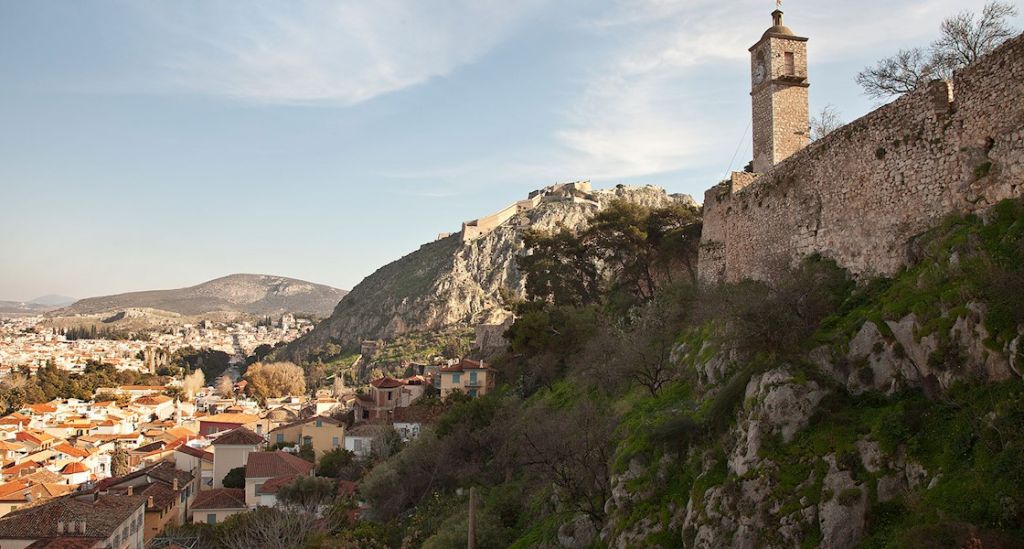SIGHTSEEING NAFPLIO
Bourtzi Fortres
Walking along the harbor and overlooking the Argolic Gulf, the Venetian castle built on the islet of Agioi Theodoroi wins the interest. It is the famous Bourtzi, built in 1473 by the Italian engineer Gambello and its first name was Castello dello Soglio. Boats from the port take visitors 10 ′ across the islet-fortress. Theodore Kolokotronis was imprisoned in this fortress. Later in the 1930s Bourtzi functioned as a center of the Tourism Organization and in the years 1960-1970 as a luxury hotel. Today it acts as a cultural center and in summer it hosts cultural events.
Walking along the harbor and overlooking the Argolic Gulf, the Venetian castle built on the islet of Agioi Theodoroi wins the interest. It is the famous Bourtzi, built in 1473 by the Italian engineer Gambello and its first name was Castello dello Soglio. Boats from the port take visitors 10 ′ across the islet-fortress. Theodore Kolokotronis was imprisoned in this fortress. Later in the 1930s Bourtzi functioned as a center of the Tourism Organization and in the years 1960-1970 as a luxury hotel. Today it acts as a cultural center and in summer it hosts cultural events.
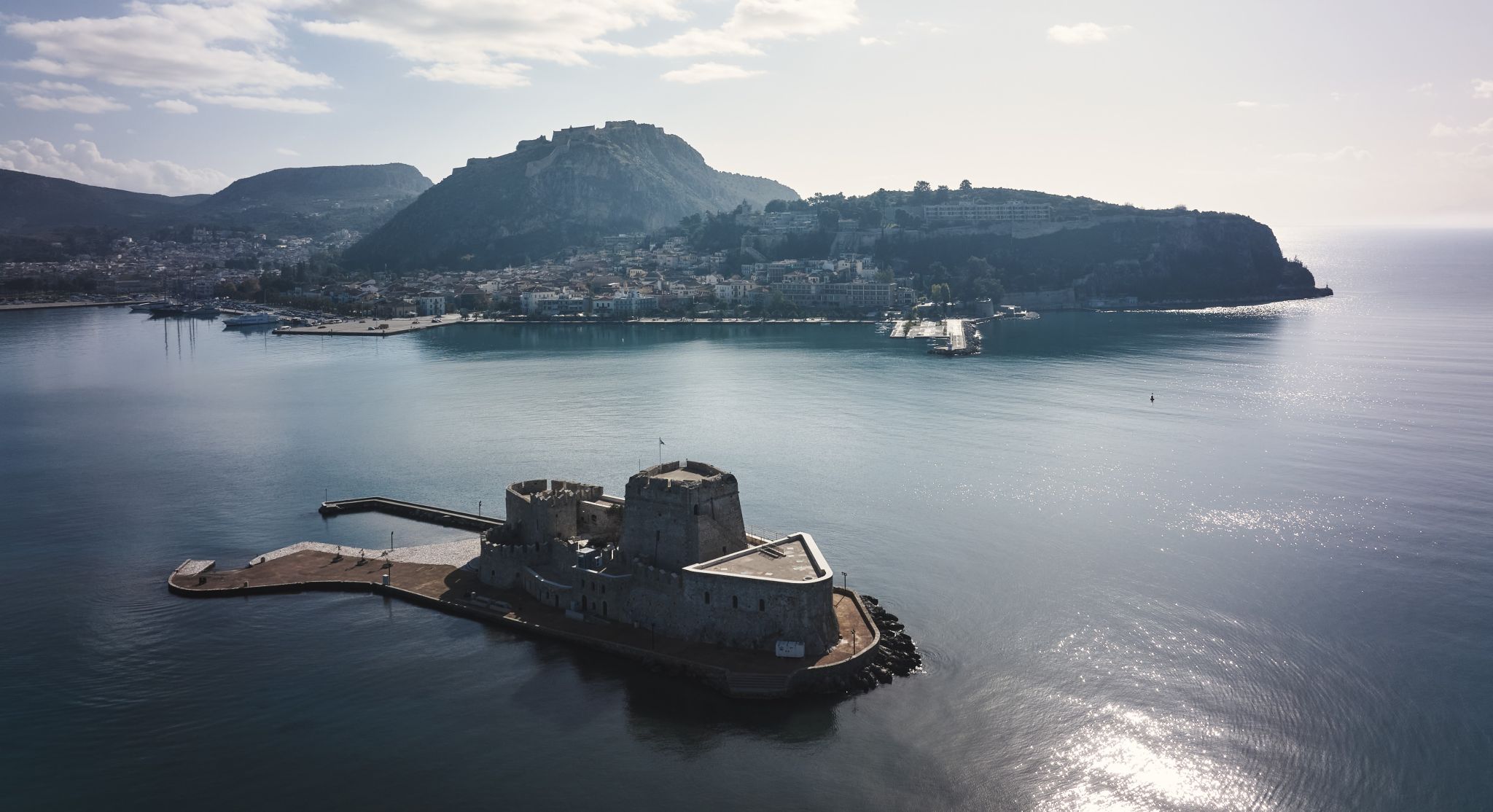
Palamidi Castle
999 steps lead the visitor of the city to the imposing Palamidi CastleVenture into a place where the famous hero of the Greek Revolution, Theodore Kolokotronis, had been imprisoned; it offers stunning views across the sea of the Argolic Gulf. Akronafplia is the historic rock at the foot of Palamidi hill, with the well-known clock popping up in between.
999 steps lead the visitor of the city to the imposing Palamidi CastleVenture into a place where the famous hero of the Greek Revolution, Theodore Kolokotronis, had been imprisoned; it offers stunning views across the sea of the Argolic Gulf. Akronafplia is the historic rock at the foot of Palamidi hill, with the well-known clock popping up in between.
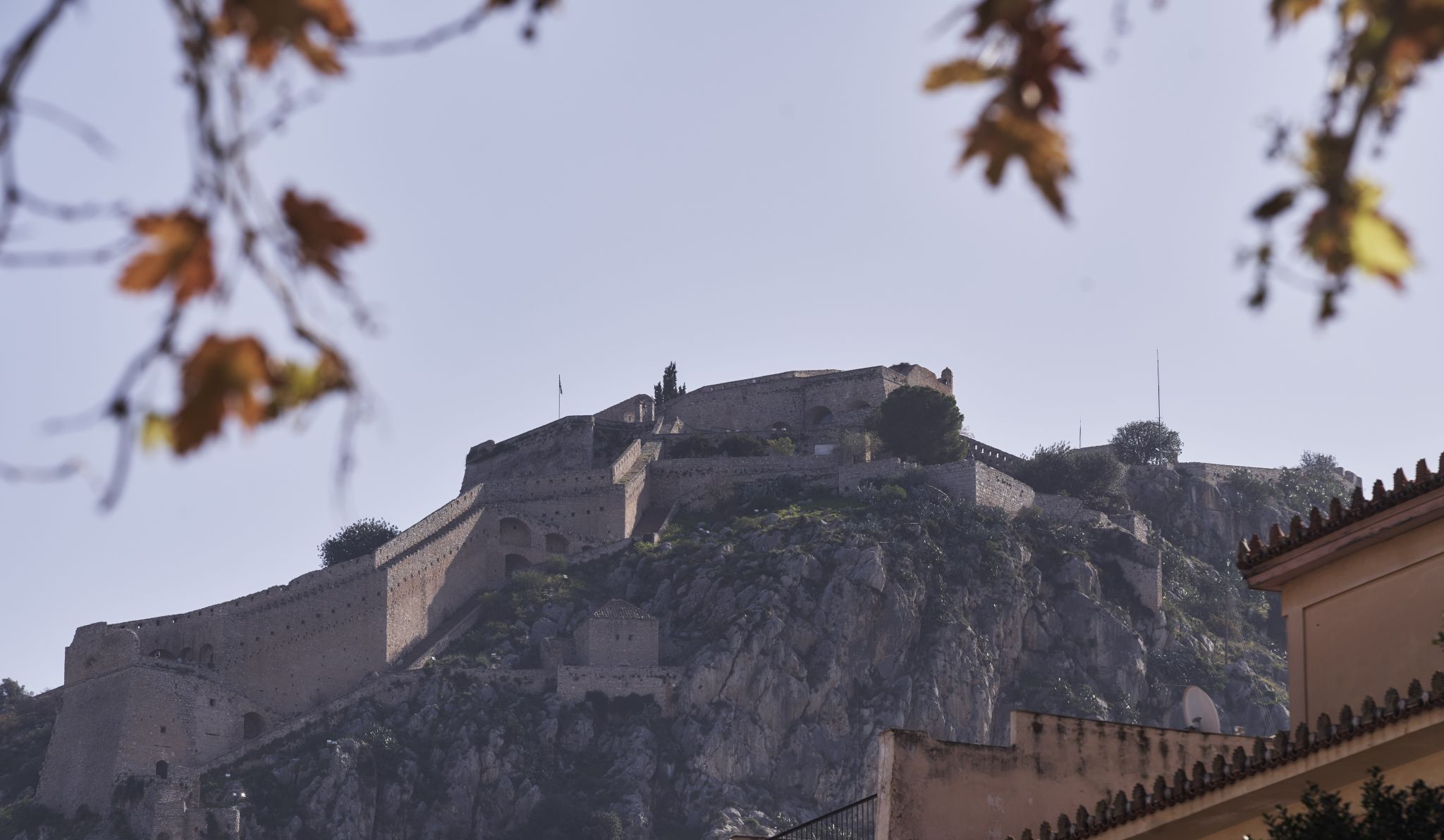
Archaeological Museum
At the heart of Nafplio is the Archaeological Museum, which travels the visitor through modern times in the history of Argolis civilizations. The Nafplio Archaeological Museum has been housed in the imposing Venetian three-storey building that borders the west side of Syntagma Square since the early 1930s. The museum was renovated from 2003 to 2008 and the museum's program of the new exhibition is structured in thematic sections that present the cultures that developed in Argolis from the prehistoric to the late antiquity. Apart from its depth, the exhibition has a great spatial reach as it presents findings and excavations from important archaeological sites.
At the heart of Nafplio is the Archaeological Museum, which travels the visitor through modern times in the history of Argolis civilizations. The Nafplio Archaeological Museum has been housed in the imposing Venetian three-storey building that borders the west side of Syntagma Square since the early 1930s. The museum was renovated from 2003 to 2008 and the museum's program of the new exhibition is structured in thematic sections that present the cultures that developed in Argolis from the prehistoric to the late antiquity. Apart from its depth, the exhibition has a great spatial reach as it presents findings and excavations from important archaeological sites.
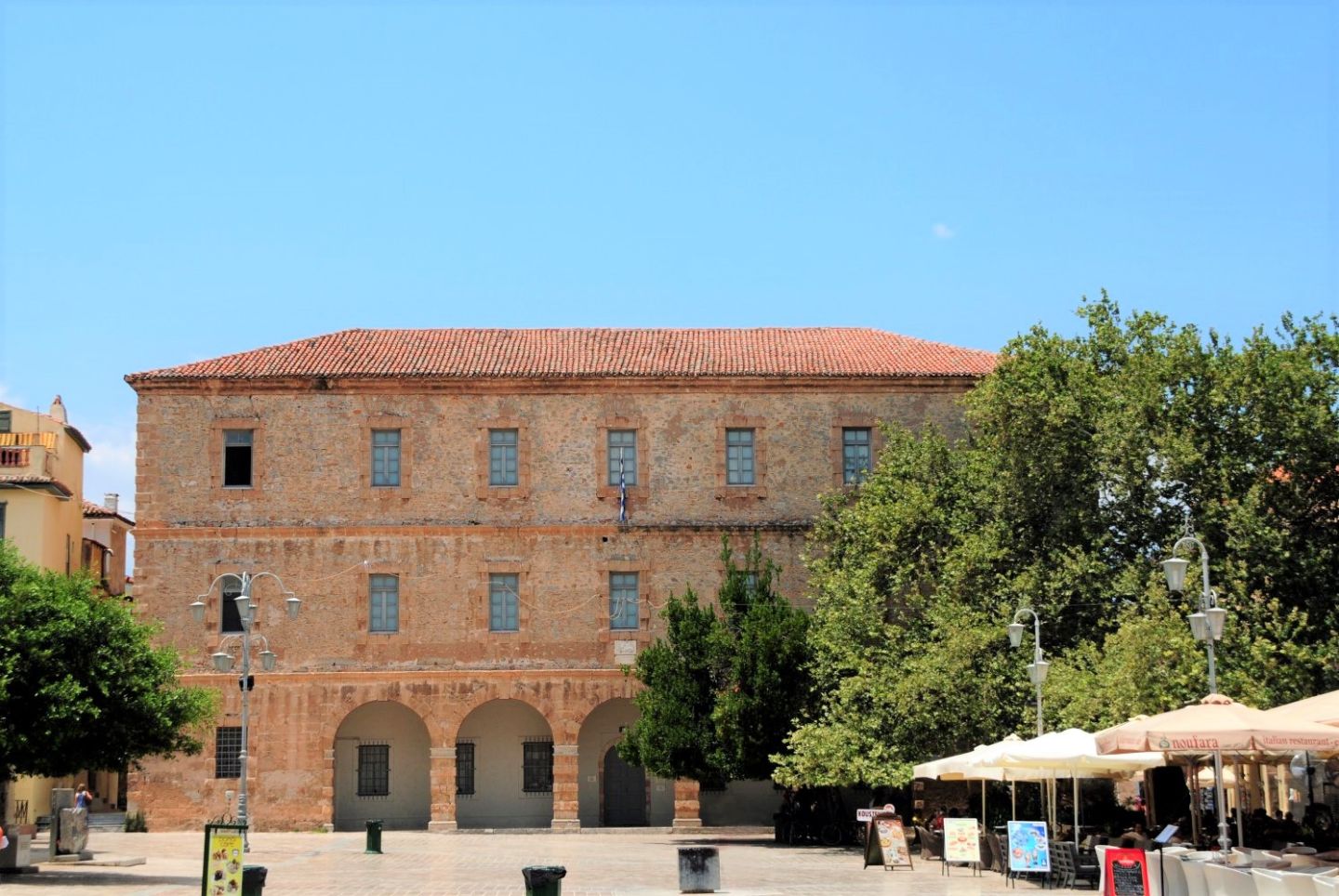
War Museum
Located in the area where the first Army Cadet School were, the War Museum was inaugurated at the end of 1988.(Amalias,22). The Museum is a directive of the history of the Army Cadet School and that of contemporary history of the Greek state, the participation of the citizens of Argolida prefecture in all rebellious acts, from the Greek Revolution against the Ottoman Empire to the liberation from the occupation troops. Divided into two floors, the Museum follows a thematic presentation of the Greek state fightings and struggles.
Located in the area where the first Army Cadet School were, the War Museum was inaugurated at the end of 1988.(Amalias,22). The Museum is a directive of the history of the Army Cadet School and that of contemporary history of the Greek state, the participation of the citizens of Argolida prefecture in all rebellious acts, from the Greek Revolution against the Ottoman Empire to the liberation from the occupation troops. Divided into two floors, the Museum follows a thematic presentation of the Greek state fightings and struggles.
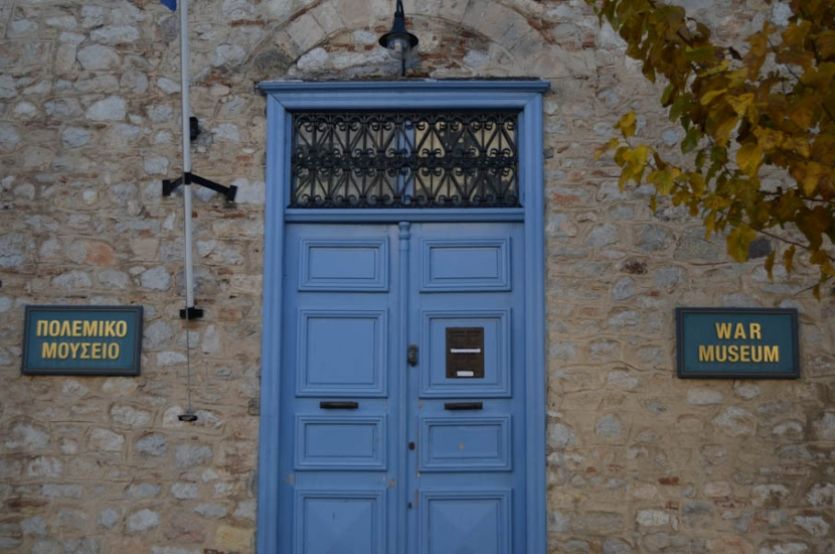
National Gallery of Nafplio
Since 2004, in the center of Nafplio, in a preserved old mansion of 1905, the annex of the National Gallery - Alexandros Souzos Museum is housed. The main theme of the exhibits, paintings and sculptures, is the Greek Revolution. In addition to the permanent exhibition hall there is a rich library of art books and albums, as well as a room that occasionally hosts periodic exhibitions. At the same time, educational programs are aimed at schools and there is a children's art workshop.
Since 2004, in the center of Nafplio, in a preserved old mansion of 1905, the annex of the National Gallery - Alexandros Souzos Museum is housed. The main theme of the exhibits, paintings and sculptures, is the Greek Revolution. In addition to the permanent exhibition hall there is a rich library of art books and albums, as well as a room that occasionally hosts periodic exhibitions. At the same time, educational programs are aimed at schools and there is a children's art workshop.
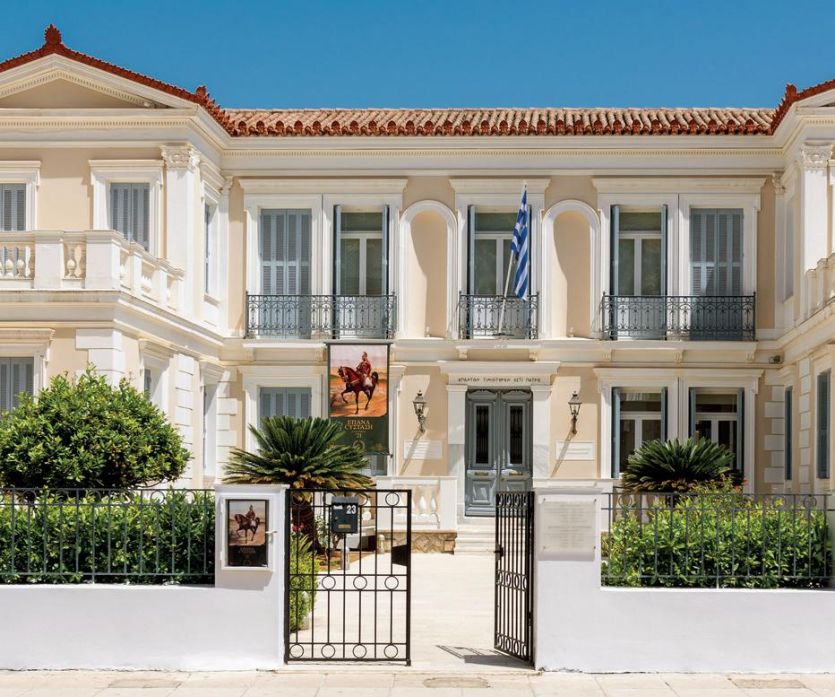
Peloponnesian Folklore Museum
It was founded in 1974 and is housed in a neoclassical building of the early 20th century in the historic city center of Nafplio. The museum's exhibition deals with the urban life of the 19th century in Nafplio and its surrounding areas. That is why anyone who visits will see traditional costumes and utensils, embroidery, photographs and jewelry. The Foundation's collections cover all disciplines related to modern Greek culture. There is also a library on site. In 1981 he was honored with the European Museum of the Year main award, as Europe's first and most comprehensive folklore museum. On the 1st and 2nd floors of the Museum there is a permanent exhibition.
It was founded in 1974 and is housed in a neoclassical building of the early 20th century in the historic city center of Nafplio. The museum's exhibition deals with the urban life of the 19th century in Nafplio and its surrounding areas. That is why anyone who visits will see traditional costumes and utensils, embroidery, photographs and jewelry. The Foundation's collections cover all disciplines related to modern Greek culture. There is also a library on site. In 1981 he was honored with the European Museum of the Year main award, as Europe's first and most comprehensive folklore museum. On the 1st and 2nd floors of the Museum there is a permanent exhibition.
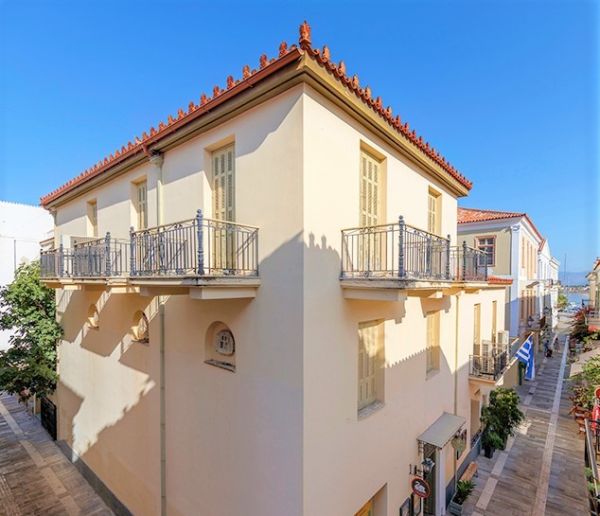
Syntagma Square
Syndagma Square, the most important and historic square in Nauplion, comprises the centre of the city. It is assumed that from 1540, the time of the first Turkish occupation, the Turkish commander of the Peloponnese, Mora-Pasha, had his seraglio here. Today, one can see many important historic buildings in the square, such as the Venetian Warehouse of the Fleet, which today houses the Archaeological Museum; the parliament, former mosque of Aga-Pasha and finally the Allilodidaktiko School, which came to be known as the 'Trianon'. The square was also once home to the residences of many of the great fighters of the Greek revolution, such as Nikitaras and Theodoros Kolokotronis. The episode known to modern Greek history as 'Psorokostaina' took place here. On the spot where the National Bank now stands, there was once the home of Kalliopi Papalexopoulou, which was built after the liberation of the city from the Turkish yoke. Mrs Papalexopoulou, the wife of the mayor of Nauplion, Spyridon Papalexopoulos, was at the head of the revolutionary movement for the removal of King Otto from Greece. In fact, it is said that her home was the centre for the organisation of the Nauplian revolution, which lasted from February to March 1862. Today, there is a monument to her memory outside the National Bank.
Syndagma Square, the most important and historic square in Nauplion, comprises the centre of the city. It is assumed that from 1540, the time of the first Turkish occupation, the Turkish commander of the Peloponnese, Mora-Pasha, had his seraglio here. Today, one can see many important historic buildings in the square, such as the Venetian Warehouse of the Fleet, which today houses the Archaeological Museum; the parliament, former mosque of Aga-Pasha and finally the Allilodidaktiko School, which came to be known as the 'Trianon'. The square was also once home to the residences of many of the great fighters of the Greek revolution, such as Nikitaras and Theodoros Kolokotronis. The episode known to modern Greek history as 'Psorokostaina' took place here. On the spot where the National Bank now stands, there was once the home of Kalliopi Papalexopoulou, which was built after the liberation of the city from the Turkish yoke. Mrs Papalexopoulou, the wife of the mayor of Nauplion, Spyridon Papalexopoulos, was at the head of the revolutionary movement for the removal of King Otto from Greece. In fact, it is said that her home was the centre for the organisation of the Nauplian revolution, which lasted from February to March 1862. Today, there is a monument to her memory outside the National Bank.
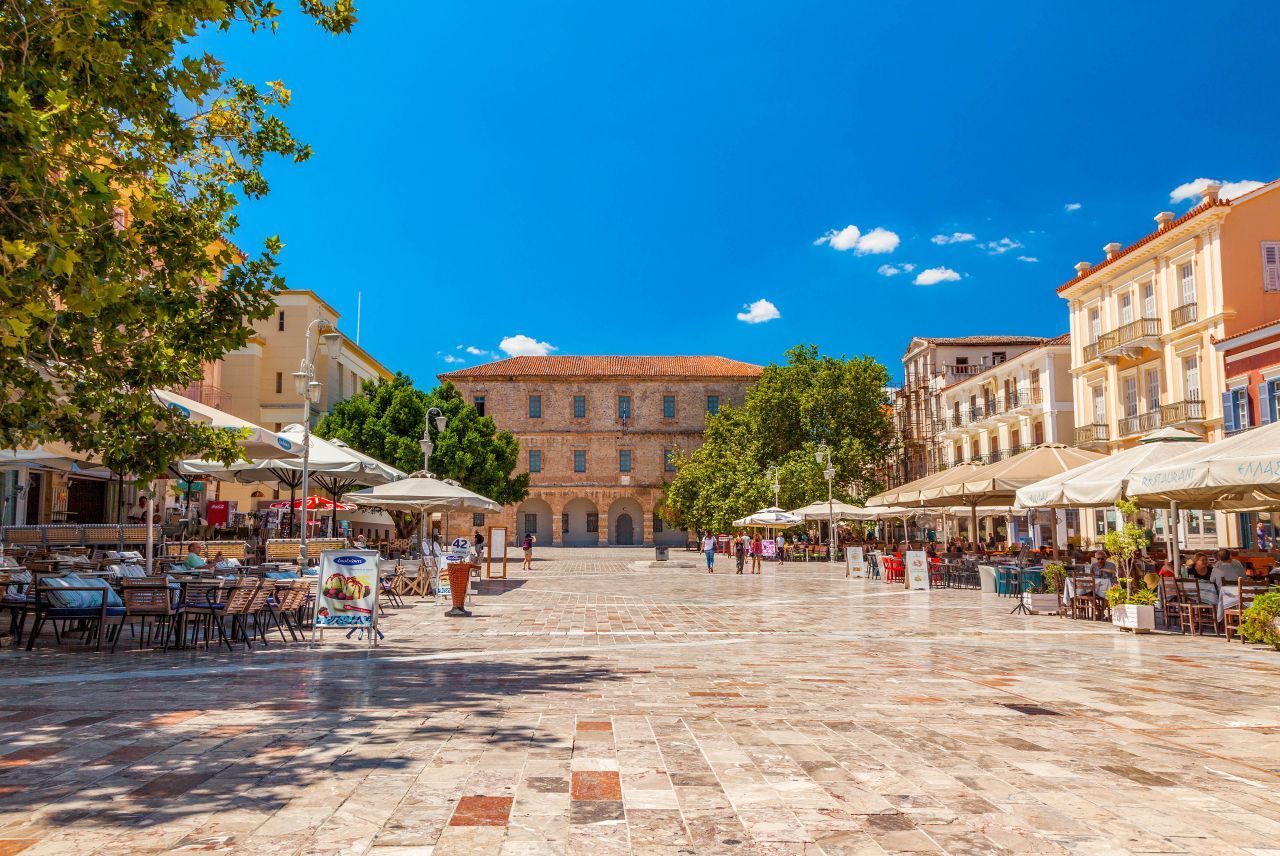
The Akronauplia
The rocky peninsular of the Acronauplia comprised the walled settlement of Nauplion from ancient times until the end of the 15th century. The Acronauplia walls bear witness to its rich history, which it must be confessed, is a little difficult to follow, due to its long uninterrupted inhabitation. The current form of the castle, although quite changed by modern intervention, basically crystallised during the Frankish and first Venetian occupations from the 13th to 16th centuries. Evidence of a pre-historic settlement has been found, and on the west side, a section of the ancient polygonal walls from the 4th century BC has survived. There are also remains of the walls from the Hellenistic and Byzantine periods. During the first Venetian occupation, and more specifically in 1470 during the command of Vettore Pasqualigo, the Venetians, threatened by Turkish raids, proceeded with repairs and extensions to the fortifications of the Acronauplia, under the supervision an important engineer of the time, Antonio Gambello. The Castello di Toro is still in good condition today and, after climbing the steps from the Catholic church, one can admire the imposing round tower with its crenellations, which protects the city gate; an excellent example of late renaissance style. In 1829, Ioannis Kapodistrias, the governor of Greece, created a large barracks and a military hospital on this site. In 1926, the infamous prison was transferred from the Palamidi and housed in the barracks created by Kapodistrias. In 1937 these prisons also became civil and operated there until about 1960. Today, one can visit The Acronauplia climbing east from Staikopoulos Park through Arvanitias Square, or climb the steps from the Catholic church through the Castello di Toro.
The rocky peninsular of the Acronauplia comprised the walled settlement of Nauplion from ancient times until the end of the 15th century. The Acronauplia walls bear witness to its rich history, which it must be confessed, is a little difficult to follow, due to its long uninterrupted inhabitation. The current form of the castle, although quite changed by modern intervention, basically crystallised during the Frankish and first Venetian occupations from the 13th to 16th centuries. Evidence of a pre-historic settlement has been found, and on the west side, a section of the ancient polygonal walls from the 4th century BC has survived. There are also remains of the walls from the Hellenistic and Byzantine periods. During the first Venetian occupation, and more specifically in 1470 during the command of Vettore Pasqualigo, the Venetians, threatened by Turkish raids, proceeded with repairs and extensions to the fortifications of the Acronauplia, under the supervision an important engineer of the time, Antonio Gambello. The Castello di Toro is still in good condition today and, after climbing the steps from the Catholic church, one can admire the imposing round tower with its crenellations, which protects the city gate; an excellent example of late renaissance style. In 1829, Ioannis Kapodistrias, the governor of Greece, created a large barracks and a military hospital on this site. In 1926, the infamous prison was transferred from the Palamidi and housed in the barracks created by Kapodistrias. In 1937 these prisons also became civil and operated there until about 1960. Today, one can visit The Acronauplia climbing east from Staikopoulos Park through Arvanitias Square, or climb the steps from the Catholic church through the Castello di Toro.
